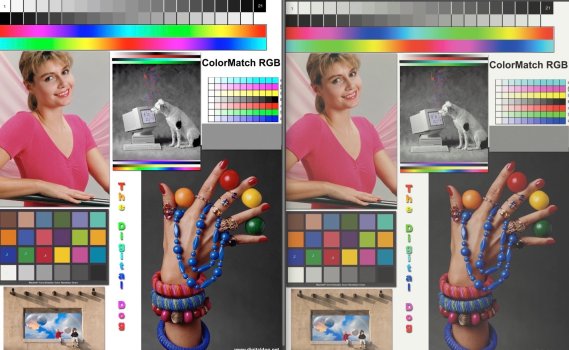I downloaded an AdobeRGB color test card. I verified with the Color Meter app that the colors reflect their RGB value accurately. My monitor is colorimeter calibrated.
I set the Color Profile of my Ricoh industrial printer (C8000) to Adobe RGB 1998 in ColorSync Utility.
I opened the test card in Preview and printed.
The image came out pretty good as far as the grays and white point but the sample image portion of it has very washed out colors in general.
So I open the image in ColorSync Utility. I apply the ICC profile of the printer to the image and sure enough my display matches my print.
So somehow my monitor can emulate my print but how can I get my print to look like my monitor, meaning the proper Adobe RGB image?
It's frustrating that I just want my images to come out of the printer correctly but by sending it to print it gets skewed and desaturated so awfully.
I thought color management meant that I could provide all the appropriate profiles and things would compensate for the different devices and give me an accurate print. So far the only thing I can predict is how washed out an image will appear by using ColorSync to apply the printer's ICC profile and screen proof an image.
If you can't tell, I'm quite new to the utility.
![be3ee94942d14a9a9e95025578252703.jpeg be3ee94942d14a9a9e95025578252703.jpeg]()
Basically, left is the image on my display, right is the image using the printer ICC and what I get from the printer as a result. How can I make my prints look like the left?
I set the Color Profile of my Ricoh industrial printer (C8000) to Adobe RGB 1998 in ColorSync Utility.
I opened the test card in Preview and printed.
The image came out pretty good as far as the grays and white point but the sample image portion of it has very washed out colors in general.
So I open the image in ColorSync Utility. I apply the ICC profile of the printer to the image and sure enough my display matches my print.
So somehow my monitor can emulate my print but how can I get my print to look like my monitor, meaning the proper Adobe RGB image?
It's frustrating that I just want my images to come out of the printer correctly but by sending it to print it gets skewed and desaturated so awfully.
I thought color management meant that I could provide all the appropriate profiles and things would compensate for the different devices and give me an accurate print. So far the only thing I can predict is how washed out an image will appear by using ColorSync to apply the printer's ICC profile and screen proof an image.
If you can't tell, I'm quite new to the utility.

Basically, left is the image on my display, right is the image using the printer ICC and what I get from the printer as a result. How can I make my prints look like the left?
Last edited:


